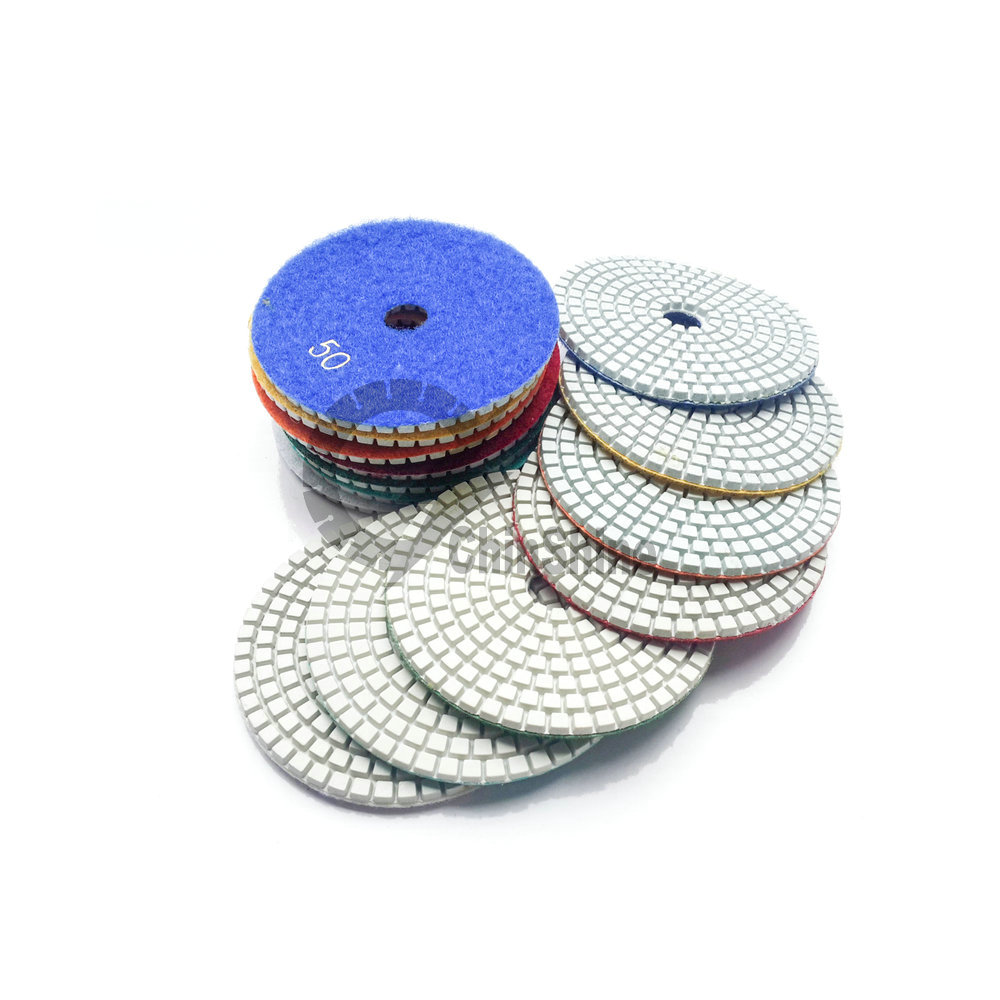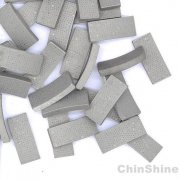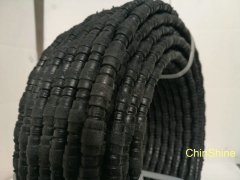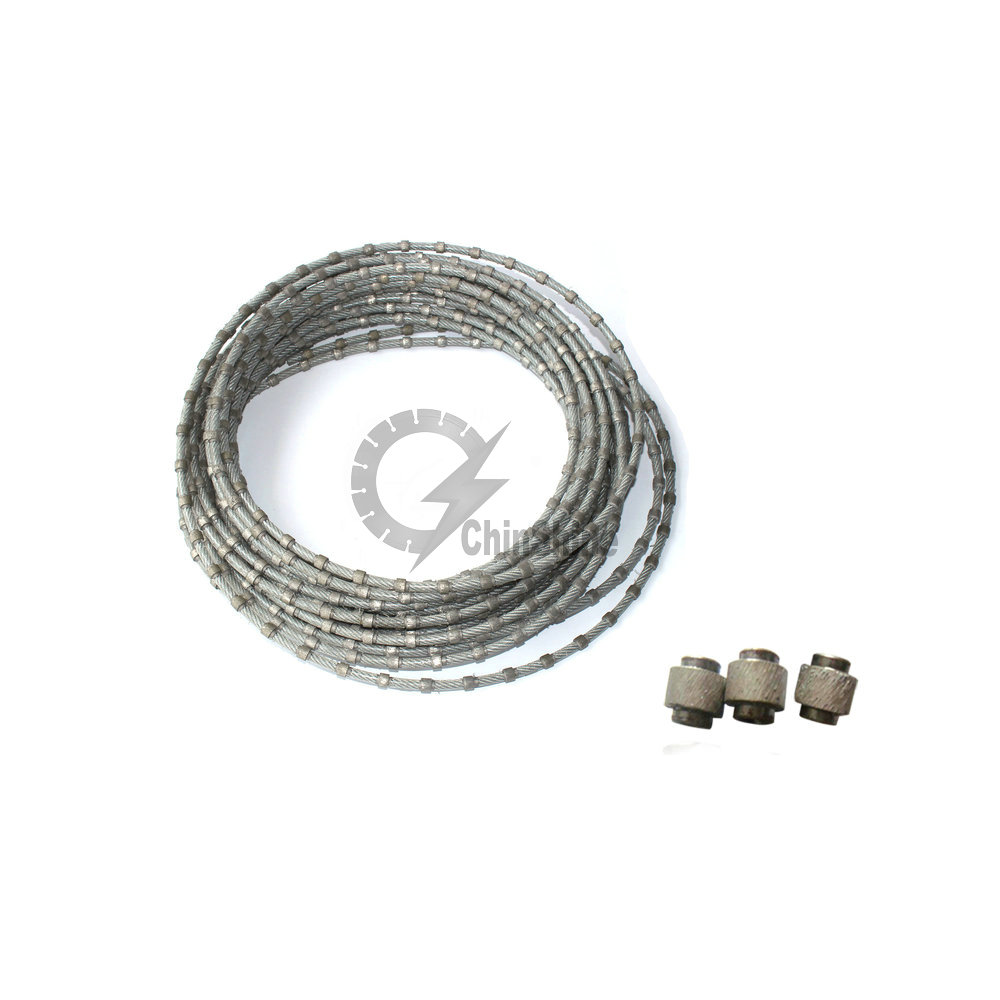Choosing A Blade
Band saw blades come in a variety of widths, tooth design, materials, and configurations.
Choosing A Correct Width.
We use the word width but really it comes down to two things: The maximum capacity your bandsaw can accommodate and the minimum radius you want to cut. The Manufacturer’s instructions should also be consulted.
If you are doing re-sawing, cant or cut-off sawing, use the maximum blade width your machine allows. This will keep the cuts nice and straight and you’ll get a decent feed rate without breaking blades.
On the other end of the scale, if you do contour sawing, you will want to use a blade that is narrow enough to cut the desired radius. The chart below shows the correlation between blade width and the minimum radius it will cut.
Blade Width Min. Radius
1/8″ 3/16″
3/16″ 5/16″
1/4″ 5/8″
3/8″ 1 1/2″
1/2″ 2 1/2″
5/8″ 4″
3/4″ 5 1/2″
1″ 7″
Bandsaw Blade Thickness
Choosing the proper thickness of the blade is important. Continual flexing and heating and cooling causes metal fatigue and ultimately, failure.
The thickness of the blade depends on the diameter of the wheels, and the work to be done. Thick blades withstand more cutting strain from straight cuts but will break more easily from the bending and twisting action. Thinner blades are recommended for lighter work. The following guidelines indicate the blade thickness for various wheel diameters.
Wheel Diam. Blade Thickness
4 – 6 inches .014″
6 – 8 inches .018″
8 – 10 inches .020″
11 – 18 inches .025″
18 – 24 inches .032″
24 – 30 inches .035″
30 inch and over .042″ .050″ .063″
How Many Teeth?
Getting a balance between a good finish and a decent feed rate are the two objectives in determining how many TPI or teeth per inch you want to use. More teeth make a smoother but slower cut. Fewer teeth allow for faster cutting but with a slightly rougher finish.
For any kind of precision cutting, the rule of thumb is to always try to keep at least 3 teeth in the material at all times. This adds stability and accuracy and applies to cutting in both metal and wood.
Coarse tooth blades of 2 or 3 TPI should be used for re-sawing and thicker materials. For general wood cutting duties in typical 3/4″ material a range of between 4 TPI for coarse, fast cutting and 14 TPI for slower, smoother cutting. Something in the 6-8 range would be a good ‘general purpose’ blade. This same equation is applied whether you’re cutting wood, or metal. An even finer 18 – 32 TPI tooth count should be used for thinner metals and plastics under 1/4″.
Tooth Styles and Sets
There are three basic tooth styles in bandsaw blades, regular, skip and hook.
Regular tooth blades have proportionally spaced teeth and are ideally suited as a general purpose blade for both cut-off and contour sawing. Used for cutting thin materials and where a fine finish is required.
The teeth on skip tooth blades are more widely spaced and have a 0° rake angle to prevent clogging when cutting soft, wood, non-ferrous metals and plastics.
Hook tooth blades have a deeper gullet/larger tooth and a positive 10° rake angle which helps the blade to feed into the material more aggressively. The result is faster cutting rates. Hook tooth blades are commonly used for long cuts into thicker wood, hardwood, plastic and metal.
Variable Pitch blades have alternating sets of different size teeth to provide both a fast but smooth finish cut and are often used in joinery and for cutting curves.
The “Set” on a blade can best be seen looking down on the teeth.
A Raker tooth set has one tooth going to the left, one to the right, followed by an tooth (which is called a ‘raker’) which is straight or, unset.
In an Alternate tooth set, one tooth goes left, the next one goes right, then left, right, etc. There is no raker tooth. The Double Alternate plus raker, has an unset raker tooth following two left-right combinations.
The Wavy tooth set has groups of teeth set left and right, separated by unset raker teeth. Wavy set blades are made primarily with the small teeth recommended for cutting thinner metal sections, tubes, pipes, thin sheets, etc.
What Is The Appropriate Set?
The appropriate set refers to the optimum balance between sawdust and air in the space between the body of the saw blade and the material it is cutting. A GOOD appropriate set is about 80/20 with 80% sawdust and 20% air being ejected. The sawdust should be warm to the touch, not hot or cold.
Too much set results in too much air and not enough sawdust and will likely leave tooth marks.
Too little set and there is not enough airflow for the amount of sawdust that needs to be pulled out of the cut. This will create hot, packed sawdust leading to short cutting times and premature blade breakage. This is about the worst thing you can do for your bandsaw blade.
Excessively under set bands will cut in a wavy motion.
Know Your SFM
Knowing the SFM or Surface Feet Per Minute for the various settings of your bandsaw allows you to select the proper speed for the material you want to cut. Bandsaw blade manufacturer’s will also provide a maximum SFM rating for their product. You should find the SFM settings in your Owners Manual. If you don’t have the Manufacturer’s specs, you can can use this formulae.
Drive Wheel RPM X Drive Wheel Diameter X .262 = SFM
Size Matters!
Using the correct size of blade is essential to the performance of your bandsaw. If you don’t have a manual and there is no marking on the machine, you can use this formula to determine the blade length you need.
1) Set the pulleys or wheels in working position.
2) Measure the center to center distance of the drive wheels. (C)
3) Measure the radius of the upper and lower drive wheels. (R1 & R2)
Blade Length = (R1 X 3.146) + (R2 X 3.146) + (2 X C)
Getting The Most Out Of Your Blades
Pre-Flight Checklist
Keep the table surface, the fence and the miter slots clean. Use a good paste wax to keep friction to a minimum.
• Round the back of your blades with a file or honing stone. This will remove any manufacturing imperfections and eliminate scouring of the thrust bearings and prevent binding when cutting curves.
• Keep the blade lubricated, no matter what material you are cutting.
• Clear away any sawdust buildup on blade guide bearings or drive components.
• Clear table insert blade guide of sawdust and debris.
• Always reduce blade tension at the end of the day.
Flutter Testing
More accurately, this should be called Flutter Setting. The objective is to set the correct tension in a more dynamic way, while the bandsaw is running. Although factory-accurate, the manufacturer’s suggested settings and adjustments often have to be tweaked in order to eliminate vibration and achieve the optimum running of the blade.
Flutter testing is essentially the same for all machines.
• Check the V-Belt tension on the motor. Replace if loose.
• Remove the Blade Guides. This is important!
• Check that tire surfaces on the drive wheels are in good condition.
• Mount blade and apply manufacturer’s recommended tension.
• CLOSE ALL COVERS FOR SAFETY!
• Start the machine and engage highest cutting speed.
On Spring Tension/Turn Screw Machines:
• Stand at the head of the machine. Very slowly start start de-tensioning,
half a turn of the turn screw at a time, while keeping an eye on the blade.
• When you see the bandsaw blade start to wobble or “flutter”, stop there.
That’s your zero point.
• Now, go the other way and start adding tension, a quarter turn at a time,
until the flutter stops and the blade stabilizes again. —Then add 1/8 ~ 1/4
of a turn.
On Hydraulic Tension Machines:
• Run test same as above except de-tension by 20-25 lbs at a time. When
re-tensioning, after you remove the flutter, add an extra 50 lbs of pressure.
On Air Bag Tension Machines:
• Again, run the same test as for Spring Tension equipment but de-tension
by 15 lbs at a time. After flutter has been removed, ad an additional 15lbs.
Shut off the machine, reinstall the guides, start sawing.
De-tensioning After Use
Blades get hot from cutting. They expand and contract and, over time, can even over tension themselves. Like getting a flat spot on your tires from sitting in one spot for too long, leaving your blade under tension, strapped around the drive wheels, creates a memory in the steel that could lead to premature failure from metal fatigue. Leaving the band tight on the saw also distorts the crown and flattens the drive tires, making them very hard. Stress is also placed on the motor, shaft V-belt and drive pulleys.
So when you’re done cutting for the day, always detension the blade. Use a simple ‘number of turns’ formulae to completely relax the blade so you don’t have to keep running the flutter test every time you want to use the saw.
Maintaining Proper Lubrication.
Never use water as a lubricant on band saw blades —or any other blades, for that matter, water is not a lubricant. It can rust and damage the body and gullets of the bandsaw blade as well as the material being cut.
There are a number of products in the market designed to specifically to lubricate blades, bits and cutting tools. Bostik™ makes an aerosol called ‘Dri-Cote™’ which is lubricates and protects all types of cutting tools with its dry film technology.
There are also solid compound cutting bars/sticks that you run against the blade to add lubrication. Make sure you pick a product that won;t stain your wood and is appropriate for your intended use.
Closer to home there are a couple of time-tested products that work great for lubricating your bandsaw blades, and it’s related components.
Mix some high adhesion chainsaw bar oil 50/50 with kerosene or diesel fuel. Remember to always apply lubricant to BOTH sides of the blade. You’ll immediately notice a quieting effect once it’s applied. Re-apply about every 4-5 minutes when the sound of cutting increases again. This concoction is reported to provide longer band life, no rusted or pitted bands and no pitch buildup!
The other interesting product used for band lubrication is PAM™ the spray-on, vegetable shortening used in cooking. It’s a great product for blades 3/4″ and under on vertical band saws. Unplug the machine, spray PAM™ on a rag and wipe both sides of the blade while turning the upper wheel by hand.
Another suggested regular product is WD-40. A large part of WD-40 is solvent, so it dries very quickly.
Whatever method you use, lubrication of the bandsaw blade body increased its life by over 30%. In each of the above cases, applied sparingly, you can cut grade lumber with NO staining.
Troubleshooting
Bandsaws are complex pieces of machinery require periodic adjustments for wear of the bandsaw itself as well as the blade. If you’re having trouble with the cuts your bandsaw blades are giving you, whether you’re cutting wood or metal, this hand PDF chart might be able to point you in the right direction.
Band saw blades come in a variety of widths, tooth design, materials, and configurations.
Choosing A Correct Width.
We use the word width but really it comes down to two things: The maximum capacity your bandsaw can accommodate and the minimum radius you want to cut. The Manufacturer’s instructions should also be consulted.
If you are doing re-sawing, cant or cut-off sawing, use the maximum blade width your machine allows. This will keep the cuts nice and straight and you’ll get a decent feed rate without breaking blades.
On the other end of the scale, if you do contour sawing, you will want to use a blade that is narrow enough to cut the desired radius. The chart below shows the correlation between blade width and the minimum radius it will cut.
Blade Width Min. Radius
1/8″ 3/16″
3/16″ 5/16″
1/4″ 5/8″
3/8″ 1 1/2″
1/2″ 2 1/2″
5/8″ 4″
3/4″ 5 1/2″
1″ 7″
Bandsaw Blade Thickness
Choosing the proper thickness of the blade is important. Continual flexing and heating and cooling causes metal fatigue and ultimately, failure.
The thickness of the blade depends on the diameter of the wheels, and the work to be done. Thick blades withstand more cutting strain from straight cuts but will break more easily from the bending and twisting action. Thinner blades are recommended for lighter work. The following guidelines indicate the blade thickness for various wheel diameters.
Wheel Diam. Blade Thickness
4 – 6 inches .014″
6 – 8 inches .018″
8 – 10 inches .020″
11 – 18 inches .025″
18 – 24 inches .032″
24 – 30 inches .035″
30 inch and over .042″ .050″ .063″
How Many Teeth?
Getting a balance between a good finish and a decent feed rate are the two objectives in determining how many TPI or teeth per inch you want to use. More teeth make a smoother but slower cut. Fewer teeth allow for faster cutting but with a slightly rougher finish.
For any kind of precision cutting, the rule of thumb is to always try to keep at least 3 teeth in the material at all times. This adds stability and accuracy and applies to cutting in both metal and wood.
Coarse tooth blades of 2 or 3 TPI should be used for re-sawing and thicker materials. For general wood cutting duties in typical 3/4″ material a range of between 4 TPI for coarse, fast cutting and 14 TPI for slower, smoother cutting. Something in the 6-8 range would be a good ‘general purpose’ blade. This same equation is applied whether you’re cutting wood, or metal. An even finer 18 – 32 TPI tooth count should be used for thinner metals and plastics under 1/4″.
Tooth Styles and Sets
There are three basic tooth styles in bandsaw blades, regular, skip and hook.
Regular tooth blades have proportionally spaced teeth and are ideally suited as a general purpose blade for both cut-off and contour sawing. Used for cutting thin materials and where a fine finish is required.
The teeth on skip tooth blades are more widely spaced and have a 0° rake angle to prevent clogging when cutting soft, wood, non-ferrous metals and plastics.
Hook tooth blades have a deeper gullet/larger tooth and a positive 10° rake angle which helps the blade to feed into the material more aggressively. The result is faster cutting rates. Hook tooth blades are commonly used for long cuts into thicker wood, hardwood, plastic and metal.
Variable Pitch blades have alternating sets of different size teeth to provide both a fast but smooth finish cut and are often used in joinery and for cutting curves.
The “Set” on a blade can best be seen looking down on the teeth.
A Raker tooth set has one tooth going to the left, one to the right, followed by an tooth (which is called a ‘raker’) which is straight or, unset.
In an Alternate tooth set, one tooth goes left, the next one goes right, then left, right, etc. There is no raker tooth. The Double Alternate plus raker, has an unset raker tooth following two left-right combinations.
The Wavy tooth set has groups of teeth set left and right, separated by unset raker teeth. Wavy set blades are made primarily with the small teeth recommended for cutting thinner metal sections, tubes, pipes, thin sheets, etc.
What Is The Appropriate Set?
The appropriate set refers to the optimum balance between sawdust and air in the space between the body of the saw blade and the material it is cutting. A GOOD appropriate set is about 80/20 with 80% sawdust and 20% air being ejected. The sawdust should be warm to the touch, not hot or cold.
Too much set results in too much air and not enough sawdust and will likely leave tooth marks.
Too little set and there is not enough airflow for the amount of sawdust that needs to be pulled out of the cut. This will create hot, packed sawdust leading to short cutting times and premature blade breakage. This is about the worst thing you can do for your bandsaw blade.
Excessively under set bands will cut in a wavy motion.
Know Your SFM
Knowing the SFM or Surface Feet Per Minute for the various settings of your bandsaw allows you to select the proper speed for the material you want to cut. Bandsaw blade manufacturer’s will also provide a maximum SFM rating for their product. You should find the SFM settings in your Owners Manual. If you don’t have the Manufacturer’s specs, you can can use this formulae.
Drive Wheel RPM X Drive Wheel Diameter X .262 = SFM
Size Matters!
Using the correct size of blade is essential to the performance of your bandsaw. If you don’t have a manual and there is no marking on the machine, you can use this formula to determine the blade length you need.
1) Set the pulleys or wheels in working position.
2) Measure the center to center distance of the drive wheels. (C)
3) Measure the radius of the upper and lower drive wheels. (R1 & R2)
Blade Length = (R1 X 3.146) + (R2 X 3.146) + (2 X C)
Getting The Most Out Of Your Blades
Pre-Flight Checklist
Keep the table surface, the fence and the miter slots clean. Use a good paste wax to keep friction to a minimum.
• Round the back of your blades with a file or honing stone. This will remove any manufacturing imperfections and eliminate scouring of the thrust bearings and prevent binding when cutting curves.
• Keep the blade lubricated, no matter what material you are cutting.
• Clear away any sawdust buildup on blade guide bearings or drive components.
• Clear table insert blade guide of sawdust and debris.
• Always reduce blade tension at the end of the day.
Flutter Testing
More accurately, this should be called Flutter Setting. The objective is to set the correct tension in a more dynamic way, while the bandsaw is running. Although factory-accurate, the manufacturer’s suggested settings and adjustments often have to be tweaked in order to eliminate vibration and achieve the optimum running of the blade.
Flutter testing is essentially the same for all machines.
• Check the V-Belt tension on the motor. Replace if loose.
• Remove the Blade Guides. This is important!
• Check that tire surfaces on the drive wheels are in good condition.
• Mount blade and apply manufacturer’s recommended tension.
• CLOSE ALL COVERS FOR SAFETY!
• Start the machine and engage highest cutting speed.
On Spring Tension/Turn Screw Machines:
• Stand at the head of the machine. Very slowly start start de-tensioning,
half a turn of the turn screw at a time, while keeping an eye on the blade.
• When you see the bandsaw blade start to wobble or “flutter”, stop there.
That’s your zero point.
• Now, go the other way and start adding tension, a quarter turn at a time,
until the flutter stops and the blade stabilizes again. —Then add 1/8 ~ 1/4
of a turn.
On Hydraulic Tension Machines:
• Run test same as above except de-tension by 20-25 lbs at a time. When
re-tensioning, after you remove the flutter, add an extra 50 lbs of pressure.
On Air Bag Tension Machines:
• Again, run the same test as for Spring Tension equipment but de-tension
by 15 lbs at a time. After flutter has been removed, ad an additional 15lbs.
Shut off the machine, reinstall the guides, start sawing.
De-tensioning After Use
Blades get hot from cutting. They expand and contract and, over time, can even over tension themselves. Like getting a flat spot on your tires from sitting in one spot for too long, leaving your blade under tension, strapped around the drive wheels, creates a memory in the steel that could lead to premature failure from metal fatigue. Leaving the band tight on the saw also distorts the crown and flattens the drive tires, making them very hard. Stress is also placed on the motor, shaft V-belt and drive pulleys.
So when you’re done cutting for the day, always detension the blade. Use a simple ‘number of turns’ formulae to completely relax the blade so you don’t have to keep running the flutter test every time you want to use the saw.
Maintaining Proper Lubrication.
Never use water as a lubricant on band saw blades —or any other blades, for that matter, water is not a lubricant. It can rust and damage the body and gullets of the bandsaw blade as well as the material being cut.
There are a number of products in the market designed to specifically to lubricate blades, bits and cutting tools. Bostik™ makes an aerosol called ‘Dri-Cote™’ which is lubricates and protects all types of cutting tools with its dry film technology.
There are also solid compound cutting bars/sticks that you run against the blade to add lubrication. Make sure you pick a product that won;t stain your wood and is appropriate for your intended use.
Closer to home there are a couple of time-tested products that work great for lubricating your bandsaw blades, and it’s related components.
Mix some high adhesion chainsaw bar oil 50/50 with kerosene or diesel fuel. Remember to always apply lubricant to BOTH sides of the blade. You’ll immediately notice a quieting effect once it’s applied. Re-apply about every 4-5 minutes when the sound of cutting increases again. This concoction is reported to provide longer band life, no rusted or pitted bands and no pitch buildup!
The other interesting product used for band lubrication is PAM™ the spray-on, vegetable shortening used in cooking. It’s a great product for blades 3/4″ and under on vertical band saws. Unplug the machine, spray PAM™ on a rag and wipe both sides of the blade while turning the upper wheel by hand.
Another suggested regular product is WD-40. A large part of WD-40 is solvent, so it dries very quickly.
Whatever method you use, lubrication of the bandsaw blade body increased its life by over 30%. In each of the above cases, applied sparingly, you can cut grade lumber with NO staining.
Troubleshooting
Bandsaws are complex pieces of machinery require periodic adjustments for wear of the bandsaw itself as well as the blade. If you’re having trouble with the cuts your bandsaw blades are giving you, whether you’re cutting wood or metal, this hand PDF chart might be able to point you in the right direction.
Previous:Diamond Blades: Blade guide Next:The Importance of Maintaining your Grinding Wheels
Thank you for your interest in the above content, please leave us inquiry, you can expect a response within 24 hours.
Required fields are marked *
|
|
|
|





